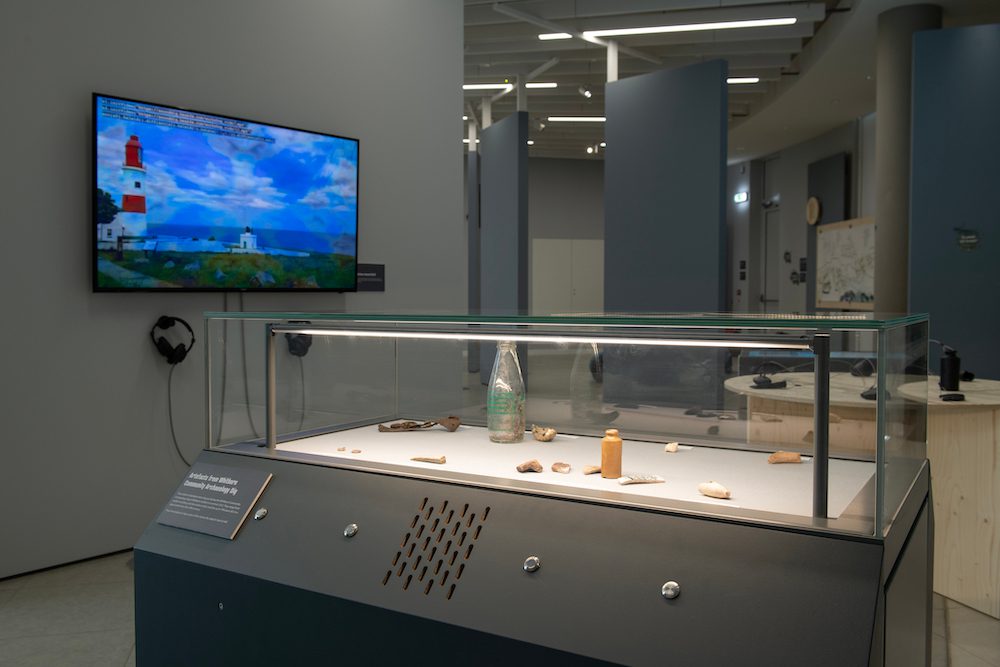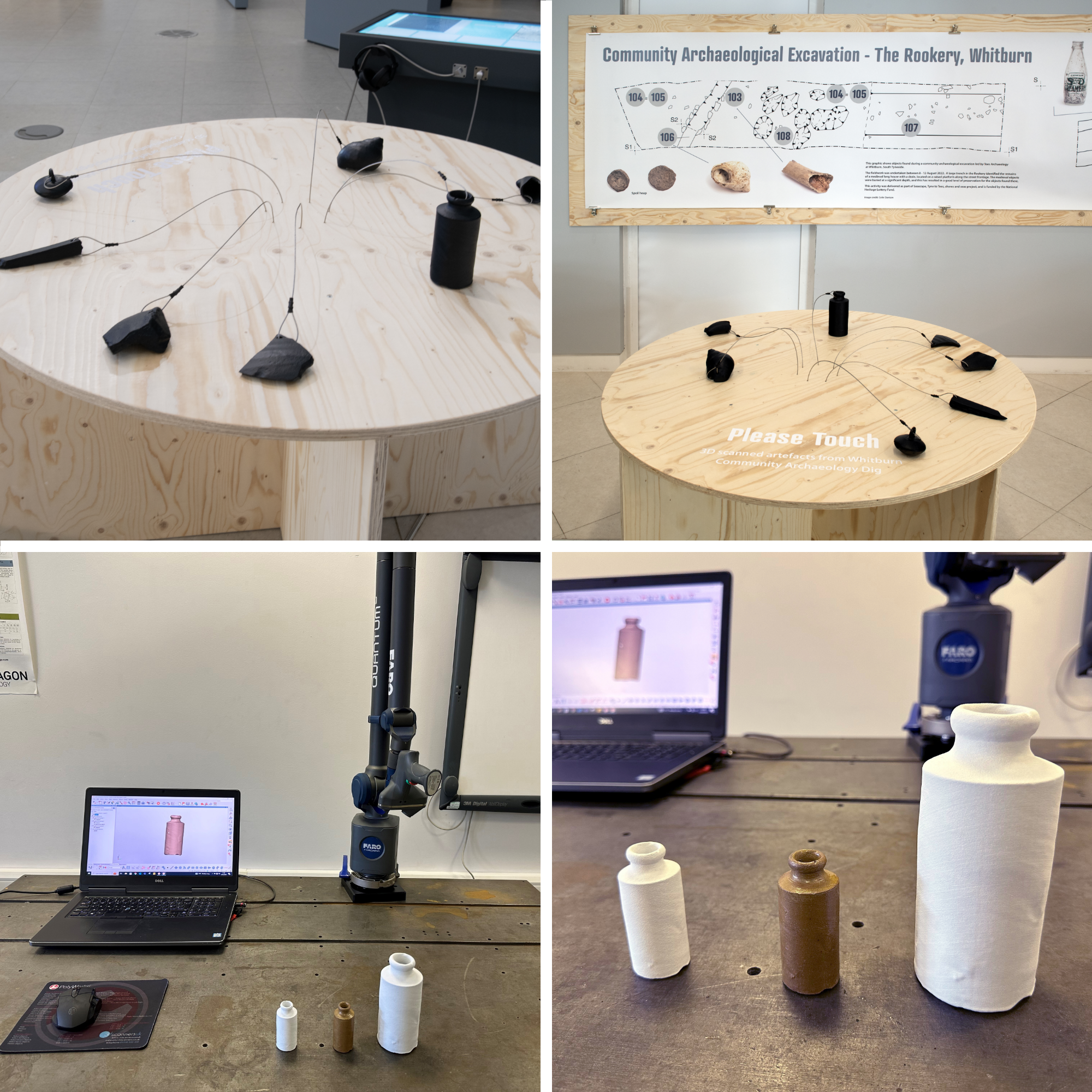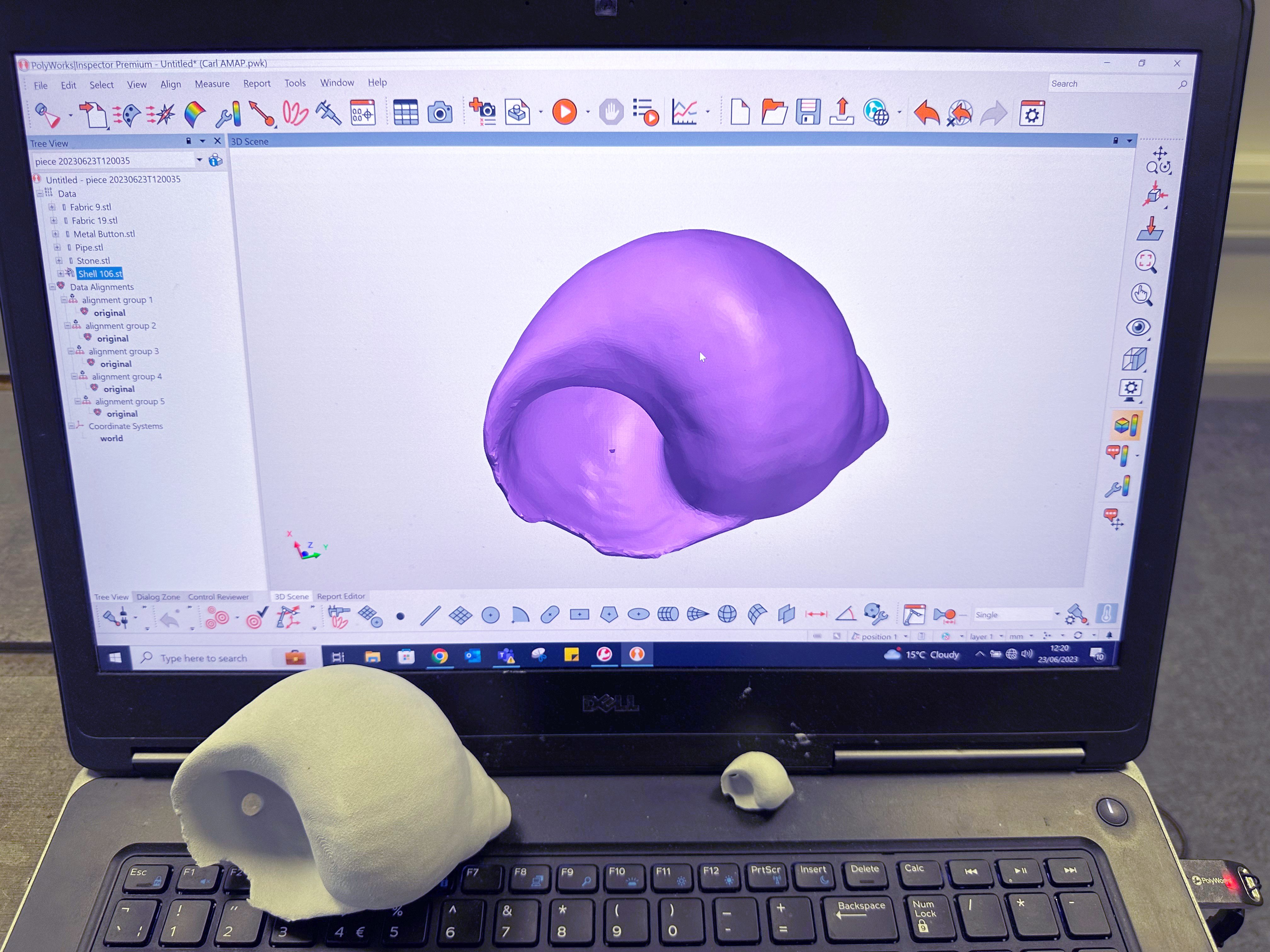
The Blue Futures Exhibition
The Blue Futures exhibition, delving into our connection with water and the coastline, was curated by Suzy O'Hara and received support from South Tyneside Council and SeaScapes, funded by the National Heritage Lottery Fund. Inspired by climate change and environmental concerns, this exhibition unites three projects that explore the diverse life and activities tied to our rivers and oceans.
The projects, namely BE THE SEA, Renewable Blue, and Sound Dig, were crafted by artists who collaborated with local communities through creative workshops and discussions to shape their concepts and artworks for the exhibition. Each of these projects prompts reflection on our ecological footprint and how we can foster a greener future by understanding and preserving our aquatic heritage.
3D Scanners UK Contribution
Our involvement was instrumental in the realisation of the Sound Dig section, led by artist Shelly Knotts and Professor Caroline Mitchell. Our expertise in 3D scanning and 3D replication significantly enriched the visitor experience. The primary goal was to create replicas of the artefacts that visitors could interact with, alongside larger 3D-printed replicas, showcasing the intricate details of these objects for visitors to admire.

To attain this objective, our experts at 3D Scanners utilised a Faro arm, demonstrating our dedication to employing cutting-edge technology in heritage preservation. The Faro arm excelled in capturing the finest intricacies of each artefact. Our technicians diligently ensured the precise recording of every contour on the artefacts. This procedure played a critical role in crafting a 3D point cloud representation of the artefacts, serving as the fundamental blueprint for the subsequent phase.

Employing PolyWorks software, an intricate 3D point cloud representation of the artefacts took shape on the screen. Following this, the point cloud underwent a refinement process before being converted into an STL file. Subsequently, the STL file was imported into the 3D printer, which proceeded to craft replicas of the original artefacts. These duplicates were then prepared for exhibition, to be showcased alongside the genuine artefacts at the upcoming event.
These reproduced artifacts served as a bridge connecting the past with the present. At the Blue Futures Exhibition, visitors had the special chance not only to admire the artefacts' intricate details but also to engage with them, offering a distinctive opportunity for a hands-on connection with our cultural heritage.



